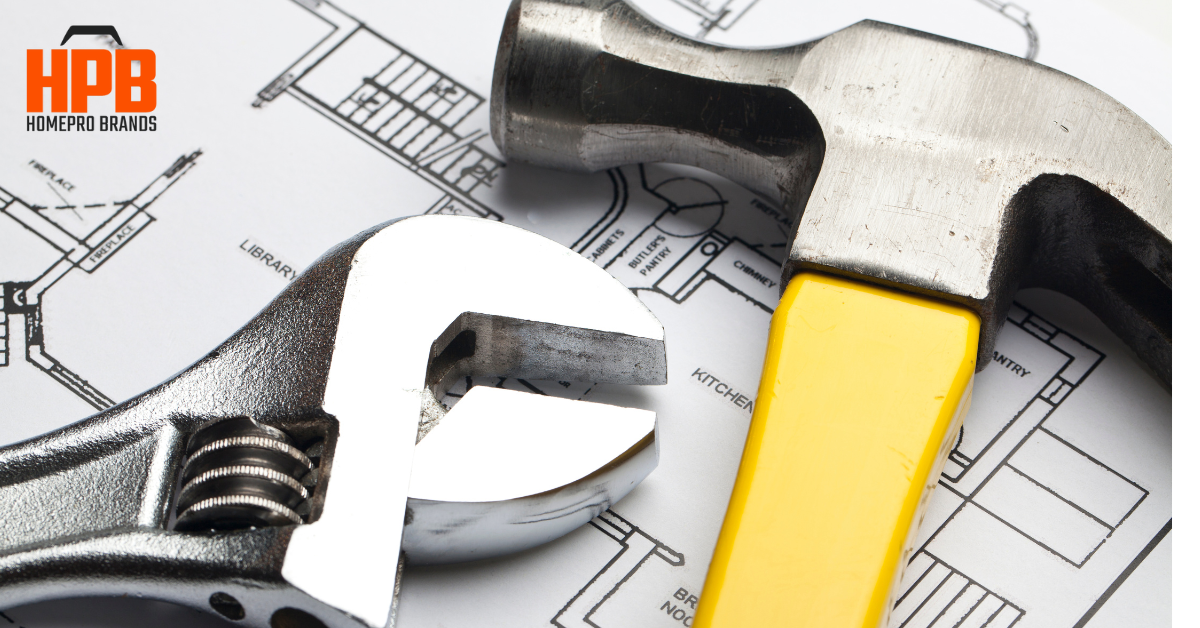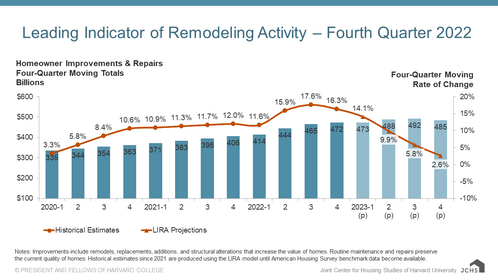
How the Coronavirus Transformed the Home Improvement Market and the Aftermath in 2023
Despite the incredible value of the home improvement industry in the U.S., a decline in the rapid growth seen during the pandemic has many industry professionals concerned about the market’s future and, subsequently, their home improvement businesses. By taking a deeper look at industry analyses and providing solutions for industry professionals to stand out amongst the competition, we’re hoping to put some of those fears to rest and spark ideas for actionable goals.
The Pre-Pandemic Home Improvement Industry
Before the pandemic, the home improvement industry saw steady growth each year, according to Zippia. However, during the 2008 recession, the home improvement market dipped by about $30 billion. The industry recovered despite this recession-fueled decrease and has continued to grow.
Then, from 2019 to 2020, the market saw unprecedented growth, with a spike in $90 billion in revenue over that one year. In this next section, we’ll take a closer look at why that jump occurred.
How the Coronavirus Affected the Home Improvement Market
The pandemic forced people to stay home, which resulted in many turning their attention to home remodeling as they searched for ways to pass the time in quarantine and sought to invest in projects that improved their living spaces. Many found solace during uncertain times by seeking ways to make homes more comfortable and enjoyable.
According to Zippia, 76% of American homeowners completed home improvement projects in 2020. In 2021, the U.S. remodeling industry earned $1.1 billion in revenue, with Americans spending $538 billion at home improvement stores.
While these numbers are due in part to more people undergoing home improvement projects during 2020 and 2021, the drastic increase in spending is also owed to the fact that a labor and materials shortage caused massive price increases for lumber and other construction materials. Thus, from 2010 to 2021, the U.S. home improvement market increased from $269.9 billion to $537.9 billion.
The Aftermath: The Post-Pandemic Home Improvement Industry
LIRA – the Leading Indicator of Remodeling Activity – from the Joint Center for Housing Studies of Harvard University predicted a 14% decrease in home renovation spending from 2022 to 2023. LIRA indicates, “After several years of double-digit gains, expenditures for improvements and repairs to the owner-occupied housing stock are expected to grow only modestly in 2023.” However, there’s no way to determine if home renovation spending will drop as low as LIRA predicts.

While consumers are no longer stuck at home debating their next remodeling ventures, other factors have also contributed to the decline in home renovation spending. For instance, current national inflation rates have been a significant contributor to the deceleration of improvement spending along with several other factors detailed by Forbes:
- Housing markets are cooling down
- The current state of the economy
- National anticipation of a recession
- Appreciation of refinancing mortgages
- Increased home prices
Despite the decline in market revenue as we find ourselves on the other side of the pandemic dealing with inflation and a tough economy, Zippia shows the U.S. home remodeling industry is expected to see a 4.1% compound annual growth rate (CAGR) from 2020 to 2027 – resulting in a value of more than $1 trillion.
Several factors enable this fixed growth, such as the increasing popularity of smart home technologies and a growing number of rental home landlords improving their properties to meet rising demand.
Although wages across the nation are slowly increasing, they have yet to outpace the impacts of inflation. While economic pressures are slowing the double-digit growth seen in the industry over the past several years, the market is still expected to grow – only at a modest pace.
How to Cut Through the Competition in the Home Improvement Industry with Effective Marketing
With the rise of organizations operating in the home improvement sector throughout the unprecedented growth brought on by the pandemic, it’s more important than ever for industry professionals to ensure they stand out amongst their competition. But it’s easier said than done.
HomePro Brands understands the frustration contractors and owners are experiencing – spending time and money on leads that don’t convert to sales, struggling to attract the right customers, and overpaying on their search and social ads – while their industry sees a halt in growth.
That’s why HomePro Brands utilizes and advocates for a different marketing approach. With a marketing growth plan, HomePro Brands seeks to transition from one-dimensional to three-dimensional thinking about marketing. The marketing growth plan is an entirely strategic plan that aligns brand, marketing, and customer experience.
By conducting a deep analysis of branding based on the brand perspective, voice, and position, HomePro Brands creates a flexible and foundational plan that paves the way for the vehicles necessary to translate your branding into leads and sales, to increase market share and profitability. HomePro Brand’s marketing growth plan results in a brand that delivers.
For more information on services offered by HomePro Brands and how a marketing growth plan can help your business, you can schedule a call today.



